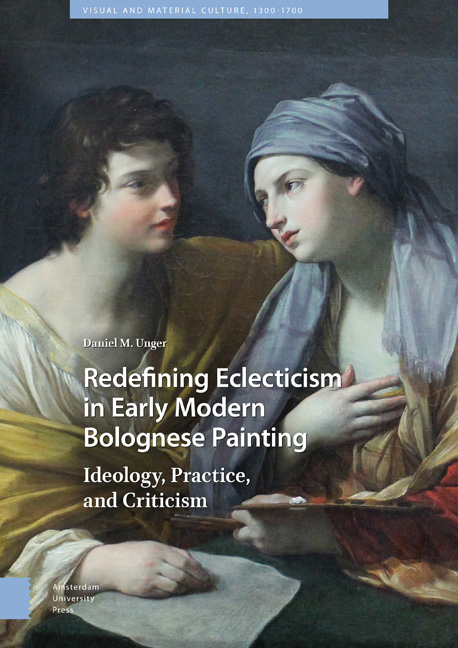1 - Defining Eclecticism
Published online by Cambridge University Press: 21 November 2020
Summary
Abstract
Chapter One traces different attitudes toward eclecticism and its conceptualization. As will be shown, Malvasia's interpretation of Ludovico's St. George altarpiece was based on a longstanding understanding of stylistic divisions that is present in the most famous early modern treatises that use different terms to address the concept of eclecticism. Although the concept itself is not mentioned in seventeenth-century artistic discourse, the ideas it defines are clearly articulated. Indeed, one may identify three types of eclecticism in both the practice and the discourse of early modern art: assimilated eclecticism, arbitrary eclecticism, and non-assimilated eclecticism.
Keywords: Eclecticism, Ludovico Carracci, Sonetto in lode di Nicolò Bolognese, Agostino Carracci, Lucio Faberio, Paolo Pino, Lomazzo
The concept of eclecticism is actually quite simple. Both the term and its practice have a long history, which can be traced back to classical Greek philosophy. The Greek verb eklegein or eklegesthai means ‘to choose’. In its broader sense, eclecticism refers to picking and selecting different philosophical doctrines and combining them together—much like Seneca's bees, which made nectar gathered from different flowers into honey. Paleotti referred to the bees that produced sweet honey out of a variety of wildflowers, while also drawing an analogy to spiders, which, like Seneca's bees, gather wildflowers but use them to produce lethal poison rather than honey. This type of dichotomy is characteristic of Paleotti's method throughout his discourse. The bee metaphor also found expression in Malvasia's book Felsina Pittrice, in which he considered Ludovico as ‘an ingenious bee that extracted the sweet essences from all the flowers of paintings, not leaving even the gardens of the Vatican untapped’.
Eclecticism, then, expresses a need to pick and choose. It may be associated with a confused and casual combination of ideas, as perceived by the Greek physician and philosopher Galen. However, it may also be regarded as a distinguished and careful choice, as is evident in the writings of Diogenes Laertius, the biographer of the Greek philosophers.
In early modern discourse, eclecticism was regarded much as it was by the Greek philosophers, as expressed in Michel de Montaigne's Essays(1580).
- Type
- Chapter
- Information
- Redefining Eclecticism in Early Modern Bolognese PaintingIdeology, Practice, and Criticism, pp. 33 - 56Publisher: Amsterdam University PressPrint publication year: 2019



